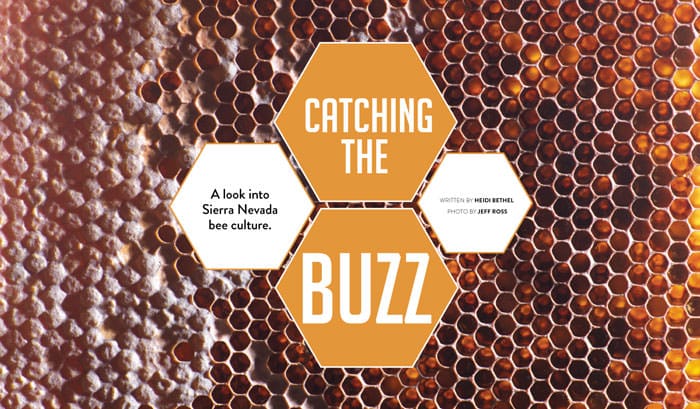A look into Sierra Nevada bee culture.
Bees aid in the production of more than one-third of the food we eat. Whether they’re foragers seeking sources of nectar or builders creating honeycombs, these high fliers are constantly working to pollinate the world and contribute more than $15 billion annually in their tireless efforts.
Beekeeping dates back to before 9,000 B.C. A cave painting in one of the Cuevas de la Araña near Valencia, Spain, depicts a man in a tree collecting honey from a beehive. About 4,500 years ago, Egyptians maintained hives in their efforts to jar honey for their pharaohs. Today, farmers rely on busy bees to help crops flourish and increase yields through pollination … not to mention produce delicious honey.
While they are the unsung heroes of modern agriculture, bees face many challenges that require conscious efforts to protect them. Read on to meet local researchers who are working to understand and protect bees, discover how Carson City became a Bee City USA, learn about Nikki Florio’s Bee Heroic initiative, meet the bees and wasps inhabiting the Bee Hotel at the Carson Tahoe Regional Medical Center, and get a taste for local honey.
It’s sure to bee enlightening.
Bees saving vets.
Carson City becomes a Bee City.
Bee hotel at Carson hospital now taking guests.
Bee Heroic opens eyes to the mighty bee.
Researchers study native bees.
Q&A with a beekeeper.
Lip-smacking local honeys.


